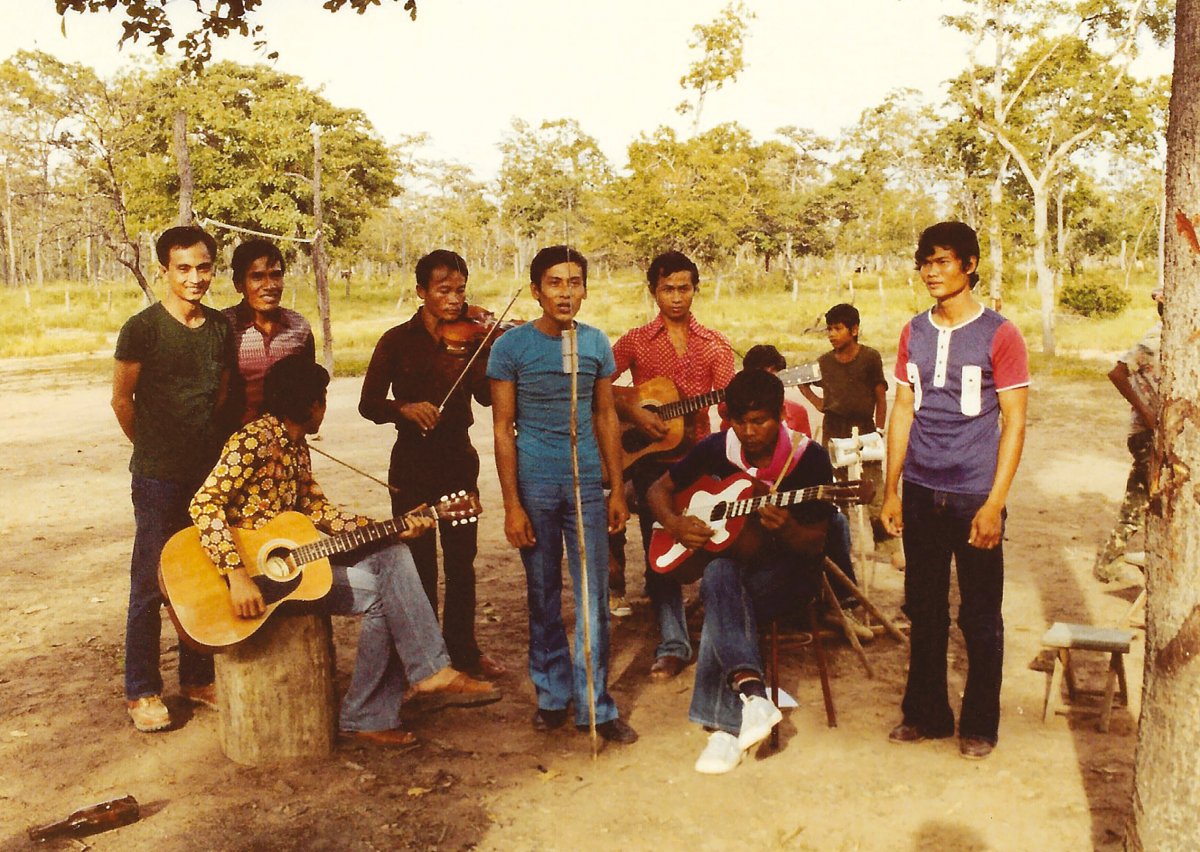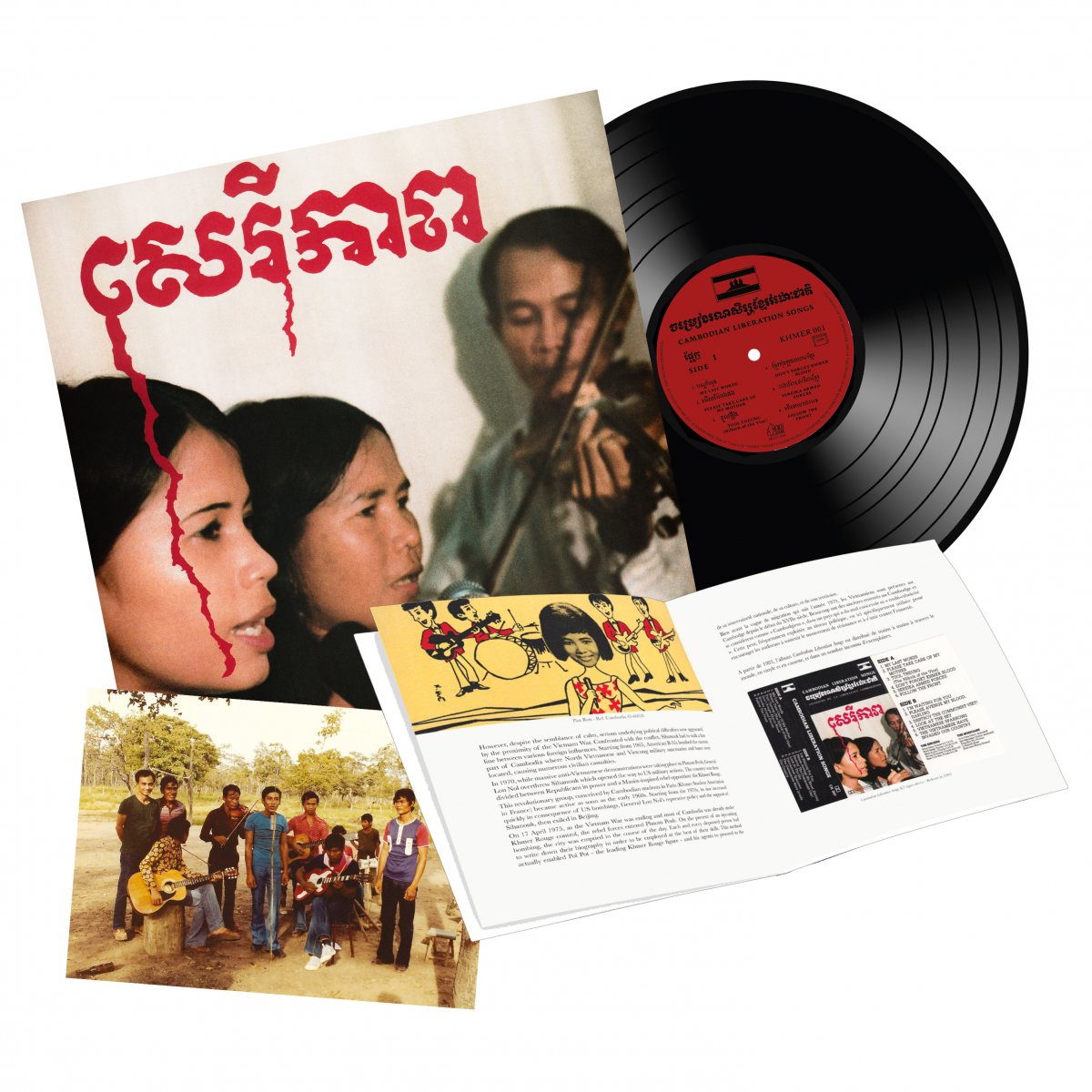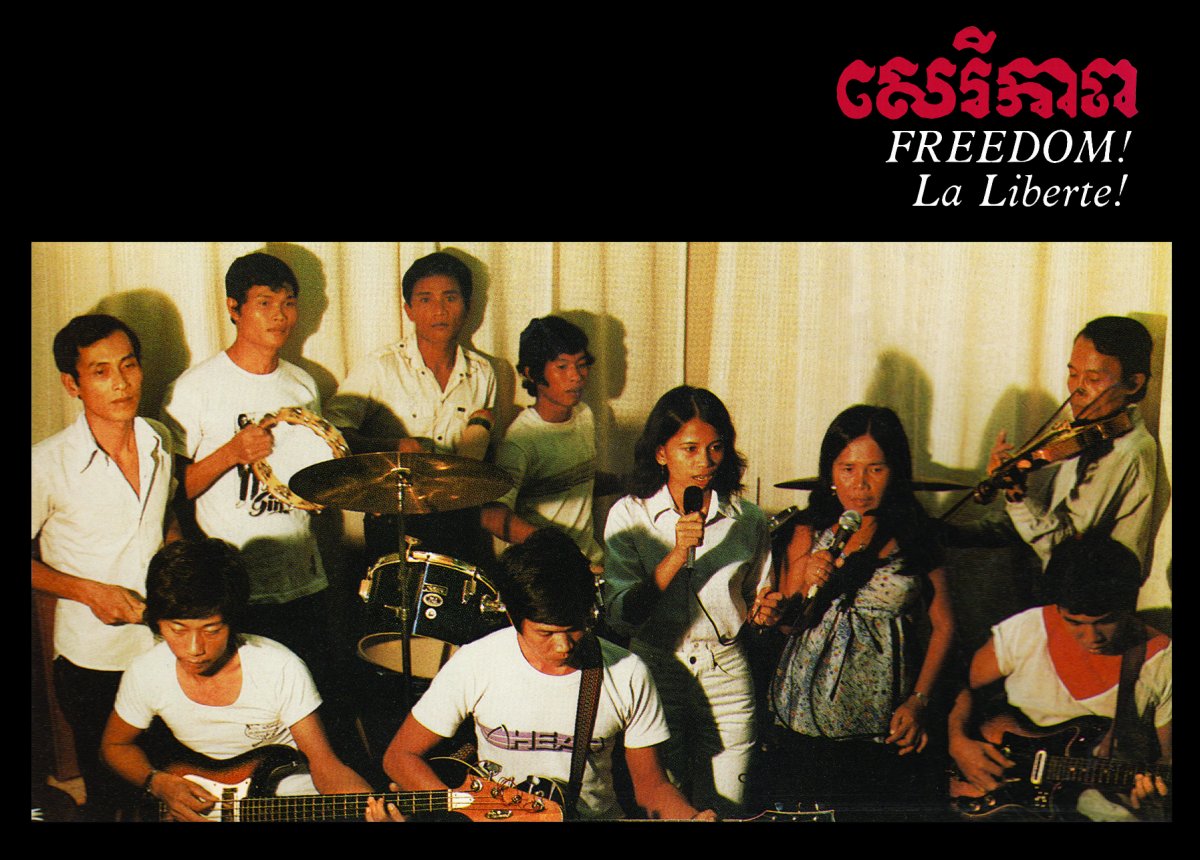Cambodian Liberation Songs
19,90€ - Vinyl (LP+DL) 12,90€ - CD 9,90€ - Digital
Released in 1983, Cambodian Liberation Songs is a mysterious and overwhelming record.
As a genuine piece of history, this “call from sorrow and fierce passion” makes use of a whole range of Cambodian music, from folk to rock, to express sufferings and complaints.
Extended reissue including 10'' booklet with liner notes and exclusive photos, postcard and redeem code.
“When I arrived at the Khmer-Thai border in September 1980, disorganized resistance cadres were busy repairing old guitar instrument by using shing line for guitar strings and employing a rusty, empty gasoline tank as a drum. They played old Khmer pop songs. [ ...] They performed for themselves and for appreciative audiences of villagers. Other informal musical groups also came together to entertain themselves and others.
One day in 1981, I photographed what was generally called the Bamteay Ampil Band.”
Gaffar Peang-Meth, November 2016
Cambodian Liberation Songs is a painful call from forgotten resistance fighters. It is a captivating record, a touching testimony of Cambodian history that brings to the world the breathless voice of these resistance members from the Banteay Ampil Band.
Released in 1983, Cambodian Liberation Songs is a mysterious and overwhelming record. As a genuine piece of history, this “eloquent sadness and fierce passion” runs the gamut of Cambodian music, from folk to rock, expressing their suffering and pain.
On 17 April 1975, the Cambodian people, already crushed under national and international conflicts, was commanded by force to forget their own past; it was Year 0 of the Khmer Rouge calendar. Almost four years of genocide would follow before the start of a war between the Vietnamese army and the Khmer Rouge. Resistance units engaged in the conflict against what they considered a Vietnamese invasion. This record, produced by a resistance group, was given the reference number KHMER 001. It was undoubtedly the first record composed and performed by non-Khmer Rouge Cambodians after the tragic events of 1975-79.
The refugee camp of Ampil, near the Thai border, witnessed the creation of the Banteay Ampil Band. Musicians and female singers who had hidden their talents during the genocide, gathered around the composer and violinist Oum Dara to engage in a new struggle: the resistance. Oum Dara, who had been a composer for Sinn Sisamouth and Ros Serey Sothea among others, adapted several of his creations. It is therefore, with a poignant charm, that the Banteay Ampil Band binds together the golden age of Khmer music from the 1960s with the traditional repertoire and the context of their daily struggles. Violin, guitar and voices work together to produce melancholic and intense songs - the stirring tone of grief expressed by these resistant fighters.
The band went to Singapore to record Cambodian Liberation Songs, the only record of the “Khmer People’s National Liberation Front”.
“En septembre 1980, quand je suis arrivé à la frontière entre le Cambodge et la Thaïlande, les cadres désorganisés de la résistance s’employaient à réparer des vieilles guitares avec du le de pêche en guise de cordes. Pour la batterie, ils utilisaient des réservoirs d’essence vides et rouillés. Ils interprétaient de vieux morceaux de musique populaires Khmer. [ ...] Ils jouaient pour eux-mêmes et pour un public admiratif de villageois. D’autres groupes de musique se sont réunis.
Un jour, en 1981, j’ai photographié ceux que l’on appelait généralement le “Bamteay Ampil Band”.
Gaffar Peang-Meth, Novembre 2016
Appel douloureux des maquisards oubliés, le disque Cambodian Liberation Songs enivre et émeut. Témoin de l'histoire récente du Cambodge, il porte au monde la voix haletante des résistants du Banteay Ampil Band.
Sorti en 1983, Cambodian Liberation Songs est un disque mystérieux et bouleversant. Véritable pièce d'histoire, cet « appel du chagrin et de la passion ardente », se saisit de tout un pan de la musique cambodgienne, du folk au rock, pour exprimer douleur et revendications. Le 17 avril 1975, déjà écrasé sous des conflits nationaux et internationaux, le peuple cambodgien est sommé par la force d’oublier son passé, c’est l’an 0 du calendrier Khmer rouge. Aux quatre années de génocide qui suivent, succède une guerre opposant l’armée vietnamienne aux Khmers rouges. Des groupes de résistants prennent part au conflit contre ce qu’ils perçoivent comme une invasion vietnamienne. Ce disque réalisé par un groupe de résistants porte la référence KHMER 001. Il est sans doute le premier composé et interprété par des Cambodgiens non Khmers rouges après les événements tragiques de 1975-79.
C'est dans le camp de réfugiés d’Ampil, à la frontière thaïlandaise, que naît le Banteay Ampil Band. Rassemblés autour du compositeur et violoniste Oum Dara, des musiciens et chanteuses, qui ont caché leurs talents durant le génocide, s'engagent alors dans une nouvelle lutte, celle du maquis. Oum Dara, qui a notamment mis en musique Sin Sisamouth et Ros Srey Sothea, adapte certaines de ses créations. Et c'est avec un charme poignant que le Banteay Ampil Band lie l'âge d'or de la musique khmère des années 1960 au répertoire traditionnel, et au quotidien de leur lutte. Violon, guitare et voix s'accordent dans un chant mélancolique et intense, tonalité vibrante de la souffrance de ces résistants.
C'est à Singapour qu'ils iront enregistrer Cambodian Liberation Songs, l’unique album du "Front National de Libération du Peuple Khmer".
83年カンボジア「解放」歌集がCD/LPリリース!




